Basic data type classification (8 types) byte, short, int, long, char, float, double , boolean 1 byte occupies 8 bits

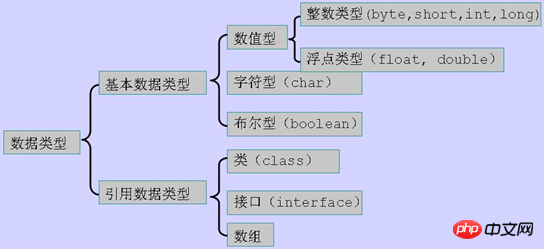
Integer type byte 1 byte-128~127, short 2 bytes, int 4 bytes, long 8 Byte
Character type char 2 bytes using unicode
Floating point typefloat 4 bytes 32-bit single precision f1=3f; double 8-byte 64-bit double Precision
Boolean type boolean (true false)
long type can be directly converted to float type
5+6+7L+'A'—— long type
5+5.6*4+'A'——double type
+L after the integer indicates a long integer——long (1234L)
Number with decimal point (Floating point number) - double no matter how big the actual value is
The floating point number ends with F - float (12.0F)
Conversion of basic data types
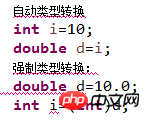


Automatic type conversion: Under certain conditions, the system automatically completes type conversion, also called implicit Conversion
① The two types are compatible ② The target type is greater than the original type ③ For expression, (precision type) if an operand is double type, Then the entire expression can be promoted to type double. (Integer type) Maximum long
Forced type conversion: Complete type conversion manually. Forced type conversion will lose precision
①The two types are compatible② Generally the target type is smaller than the original type
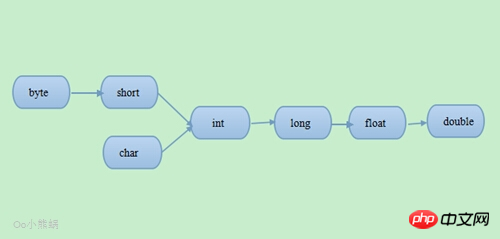
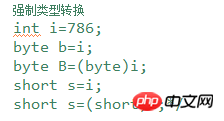
Conversion across data types
Basic type is converted into StringThere are three methods
1. Use the valueOf method of String
2. Encapsulate the basic data type into an object, and then call the toString method of the object
3. Use Adding an empty string to a basic type results in a string corresponding to the basic type data.
There are two methods for converting strings into basic types
1. Call the parseXxxstatic method of the basic type encapsulation class.
2. Use a string to construct a basic type of encapsulated object, and then call the xxxValue method of the encapsulated object.
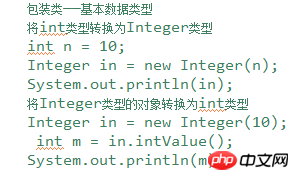
Reference data type conversion
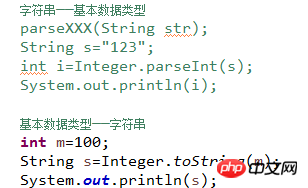
Shortcut keys
syso+alt+/ ——system.out. println()
main Then press alt+/—— public static void main(String[] args) {
\n——Newline \t——Space
SHIFT+TAB——Move forward Ctrl+A——Select all Ctrl+shift+f——Automatically organize the code 1TAB=4 spaces
package com.jredu.ch02;
import java.util.Scanner;
/**
* 会员抽奖
* @author Administrator
*
*/
public class Exer2 {
public static void main(String[] args) {
System.out.print("请输入您的四位会员卡号");
Scanner input=new Scanner(System.in);
//获取输入的会员号
int num=input.nextInt();
//计算四位数的每一位数字之和
//千位数字
int a=num/1000;
//百位数字
int b=num%1000/100;
//十位数字
int c=num%100/10;
//个位数字
int d=num%10;
//四位数字每位数和
int sum=a+b+c+d;
//输出会员卡号之和
System.out.println("会员卡号之和是"+sum);
System.out.println(sum>20?"恭喜你中奖50元":"很遗憾,您没中奖");
input.close();
}
}The above is the detailed content of Java data types and their conversion&&Commonly used shortcut keys graphic introduction. For more information, please follow other related articles on the PHP Chinese website!